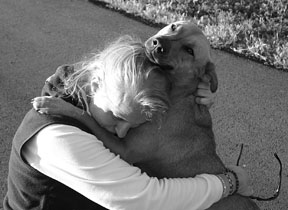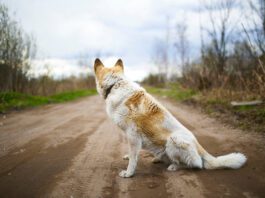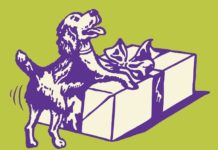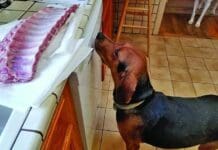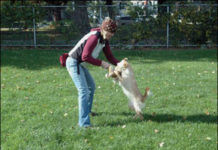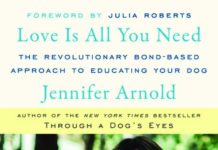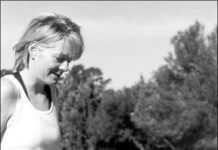Getting Beyond the Basics of Dog Training
Not so very long ago, trainers assumed that anyone who signed up for a basic obedience class was seeking that perfectly straight, sit-in-perfect-heel position. Classes were conducted with military precision, trainers barking commands as owners marched their dogs in a circle, jerking and popping on leashes and choke chains in order to achieve lightning-fast responses. Success was measured by speed and perfection of position, and advanced work was conducted with one goal – to show in American Kennel Club obedience competitions, earn obedience degrees, and achieve scores as close to that magic “perfect 200” as possible.
Does Your Female Dog Hump?
Usually humping is associated with male dogs, but humping is also very common amongst female dogs. Some girls will hump toys or other objects, some hump air, others hump other dogs or even people. To learn more about humping, why girls do it, and how to keep your female dog from humping, we talk with Certified Professional Dog Trainer and Chair of The Association of Professional Dog Trainers Nick Hof, CPDT-KA, CBCC-KA, KPA-CTP, CSAT, to answer some of your most commonly asked questions about female dogs and humping.
The Importance of a Dog’s Name with Regards to Training
There's a new dog coming into your life who needs to learn her name. A puppy perhaps? Or maybe an adult rescue do-over" dog? You might even have a dog who's been with you for a while
Your Dog’s Behavior: When to Manage, When to Train
How do I stop my dog from stealing food? How do I get my dog to stop drinking toilet water? Why does my dog run off all the time? These are just a few of the countless things dogs do that make their guardians run to professional trainers for help. The reality of dog behavior modification is that often the solution to a dog's bad habit is not through training the dog, but through carefully managing every opportunity the dog has to practice unwanted behaviors.
Teaching Your Dog to “Leave It” On Cue
mark the desired behavior with the click of a clicker (or the word "Yes!") and feed him a different treat.üPractice "Leave it!" with everything your dog likes in real life: food
Best Dog Training Treats for Different Training Scenarios
Experiment with a wide variety of foods to find out what treats your dog loves most. If higher-value treats don't work, remove your dog to a less distracting environment, gradually increasing distractions as he's ready to handle them.
A Bond-Based Approach to Dog Training
There is a lot of food for thought in this book. There is much that I find intriguing and would like to pursue, and also much that I disagree with. Arnold criticizes modern trainers for their focus on operant conditioning without acknowledging the great interest force-free trainers have already demonstrated in regard to the concepts of empowerment, choice, and cognition in their training programs. She insists that dogs really are eager to please" their humans an idea I have long argued against. She hasn't convinced me on that topic
Dog Training Basics: How to Teach a Cue
While our dogs are born with all sorts of natural canine inclinations – like searching out food, investigating scents, romping with friends – “listen to words from humans” is not part of their default program. With the right kind of teaching, responding to your cues will become a dog’s go-to choice because it is the most reliable route to the things he wants.
Best Dog Training Approaches
All dog training techniques fit somewhere on a long continuum, from seriously harsh and abusive punishment-based methods at one extreme, to pure positive reinforcement at the other. Neither extreme is likely to be very practical or effective, nor will you find many trainers who recommend using only methods from one end or the other. Most trainers use a combination of techniques that place them somewhere between the two ends of the continuum. Which side of center they are on defines them as primarily compulsion-based trainers or primarily positive ones.
The ABCs of Training
We have Edward Thorndike (1874 - 1949) to thank for teaching us about The Law of Effect. While studying behaviorism, he observed and described The Law of Effect, which states that behaviors change as a result of the consequences to actions. Boundless.com has a nice succinct explanation of The Law of Effect:
Training Small Dog Breeds
There’s a reality show that airs on TLC called Little People, Big World that chronicles the daily lives of the Roloffs, an Oregon family made up of both small (both parents are under 4 feet tall) and average-sized people. The series tastefully portrays how every day activities and seemingly uneventful situations can affect the family members differently based on their size and how society views them. Most importantly, it successfully shows that size does matter, particularly in a society built for the average-sized person. I just wish there was a show, or at least an effective way to get that point across regarding small dogs. They and their owners have long been misjudged and misunderstood.
Frustrated With How Your Dog’s Training is Going?
an obedience class


